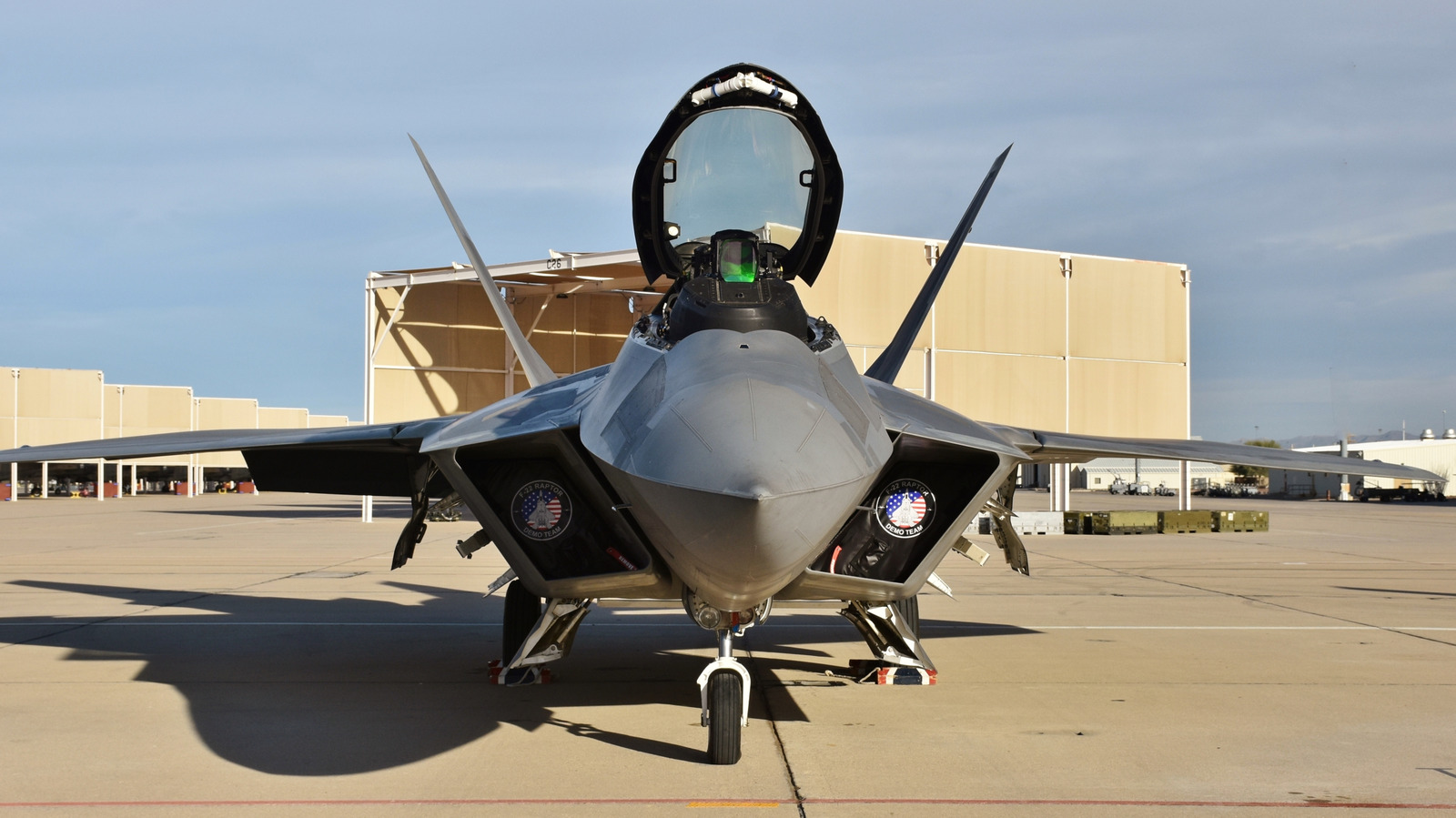Nearly 30 years since its first test flight in 1997, the Lockheed Martin-Boeing F-22 Raptor still looks like it came from the future. Sporting both a curved body and hard-edged angles as well as that signature golden canopy, the F-22 is an iconic design that’s instantly recognizable.
But while there are plenty of amazing images of that radar-absorbent exterior, its interior has been kept pretty tightly under wraps. Much of the technology inside the F-22 remains classified, so while the U.S. Air Force is very happy to show it off at air shows, it generally avoids ever showing anyone the inside of the cockpit.
Still, some information about the controls and displays of the Raptor have been released, and various pilots have talked about the experience of flying one. The F-22’s technological edge comes as much from its advanced avionics as its stealth silhouette, empowering pilots in a way that fourth-generation fighters like the F-18 (which seem to be easy to lose) never could. That makes life in the cockpit very different for these pilots than their peers.
The interior of an F-22 cockpit
If you were to get near the interior of an F-22, you’d first have to raise the canopy. It’s a bit more bulbous than the sleek designs of other aircraft, but as with the various other curves along the F-22’s frame, this is meant to deflect radar. In other words, even the cockpit is a part of the Raptor’s stealthiness.
Once in the seat, you might first notice what you don’t see — dials. The F-22 has an all-glass cockpit, meaning that instead of a traditional instrumentation panel with lots of dials, the pilot is greeted by an array of computer screens made of glass. These are liquid crystal displays, visible even in direct sunlight (useful, since fighter pilots tend to like the sun directly at their backs). There are six such displays in total, including a larger central display for identification and target acquisition.
To interact with all that, the pilots don’t even have to take their hands off the controls. That’s because the F-22 uses a hands-on throttle-and-stick system, which puts the computer inputs directly on, well, the throttle and control stick. This way, the pilot can interact with the complex systems while simultaneously flying the plane. With all that information literally at their fingertips, the pilot can personally process all the information they need; in other words, these fifth-generation fighters have no need for a backseat passenger, called the weapons systems officer on older planes.
Being a pilot in the cockpit
Actually sitting in that cockpit can be pretty intense. The plane can withstand anywhere from 9 gravities to minus 3 gravities, so the pilot will be wearing a G suit to help compensate. Over that, the pilot will have a flotation vest in case of a watery landing (read: crash), a harness with survival gear, and, of course, a helmet with communication equipment and oxygen.
That said, one of the F-22’s party tricks is that it is capable of supercruise — staying at supersonic speeds for extended periods without afterburner. That makes for a smooth, comfortable experience above the speed of sound, unlike in most other fighter jets. It’s good to be an F-22 pilot.
That’s especially true since, with all that information available to them on all those displays, F-22 pilots are empowered to make judgement calls on what to do in a given situation, not just the flight leads. Flying a Raptor is an awesome responsibility, but the plane gives you the power to make use of it.





